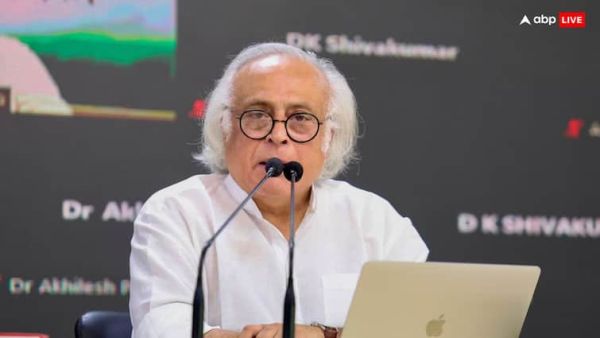After Nifty broke out of a 31-day long narrow consolidation phase on Thursday’s monthly expiry, bulls are now betting that a fresh all-time high could come in the next few days given FII buying amid favourable global macro set-up, crude oil’s 11% weekly crash, July's historically bullish seasonality, and Trump's trade deal hints.
In just four trading sessions, the Sensex has rocketed 2,162 points in a non-stop rally, now sitting less than 2,000 points from its all-time record high. The Nifty has simultaneously climbed to its highest level since October 1, 2024, and needs only 640 points to look past the September peak of 26,277.
"Key catalysts like the ceasefire in the Middle East and optimism on easing trade tensions ahead of the deadline have cleared the clouds in the minds of investors," said Vinod Nair, Head of Research at Geojit Investments Limited. "After consecutive days of selling, FIIs have turned net buyers in the domestic market, contributing to improved market stability in the near term."
The banking sector has already given a taste of what's to come, with the Nifty Bank index smashing through to a fresh record high of 57,475.40 on Friday. This sectoral leadership often precedes broader market breakouts, adding fuel to speculation that the main indices are next in line.
Also Read | Rs 1 lakh crore selloff tsunami threatens Nifty rally as promoters, strategic investors exit
June month’s rollover data shows that FII long-short ratio in index futures climbed to 38.43%, marking one of the highest levels seen in the recent past. A rising long-short ratio indicates that FIIs are increasingly building long positions, a bullish sign that suggests they are anticipating further upside in the near term, SBI Securities said.
"Historically, July has been a bullish month for both the Nifty 50 and Bank Nifty indices," revealed Anand James, Chief Market Strategist at Geojit Financial Services. "Over the past 15 years, Nifty 50 has delivered positive returns 73% of the time, with an average gain of 4%. This trend is often attributed to a post-June recovery and as early Q1 earnings optimism tends to fuel investor sentiment."
The data gets even more compelling for the banking sector. "Bank Nifty has posted gains 66% of the time, with an average return of 4.5% in July," James added. "With July's typically bullish seasonality in play, if broader participation improves and investors avoid heavy profit booking, Nifty could join the rally and possibly move toward new highs."
Adding to the positive momentum, the rupee has appreciated 1.3% for the week, its best weekly performance since January 2023. The currency strength, combined with benign oil prices, has created a favorable macro backdrop for continued market gains.
“However, the gap area around 25,800 could cause a temporary pause. In the event of a pullback, the 24,800–25,200 zone—which previously acted as resistance—is likely to offer strong support,” he said.
June’s Nifty rollover increased to 79.53%, slightly higher than May’s 79.10% and also above the three-month average of 79.24%, indicating continued participation and positioning by traders on the long side heading into the new series.
Siddhartha Khemka, Head of Research at Motilal Oswal Financial Services, expects the momentum to sustain: "We expect the market to witness a steady uptrend, supported by improving institutional inflows, prospects of a US-India trade deal, and sectoral tailwinds from RBI's liquidity measures and an above-average monsoon forecast."
In just four trading sessions, the Sensex has rocketed 2,162 points in a non-stop rally, now sitting less than 2,000 points from its all-time record high. The Nifty has simultaneously climbed to its highest level since October 1, 2024, and needs only 640 points to look past the September peak of 26,277.
FII Firepower Ignites Markets
The catalyst for this dramatic breakout? Foreign institutional investors (FIIs) have returned with a vengeance. FIIs staged a spectacular comeback as net buyers Thursday, pumping in equity inflows exceeding ₹12,500 crore, the highest single-day buying spree in eight months. The surge came as US President Trump hinted at significant progress in negotiations with India for a long-awaited bilateral trade agreement."Key catalysts like the ceasefire in the Middle East and optimism on easing trade tensions ahead of the deadline have cleared the clouds in the minds of investors," said Vinod Nair, Head of Research at Geojit Investments Limited. "After consecutive days of selling, FIIs have turned net buyers in the domestic market, contributing to improved market stability in the near term."
The banking sector has already given a taste of what's to come, with the Nifty Bank index smashing through to a fresh record high of 57,475.40 on Friday. This sectoral leadership often precedes broader market breakouts, adding fuel to speculation that the main indices are next in line.
Also Read | Rs 1 lakh crore selloff tsunami threatens Nifty rally as promoters, strategic investors exit
June month’s rollover data shows that FII long-short ratio in index futures climbed to 38.43%, marking one of the highest levels seen in the recent past. A rising long-short ratio indicates that FIIs are increasingly building long positions, a bullish sign that suggests they are anticipating further upside in the near term, SBI Securities said.
July's Historical Magic
Timing couldn't be more favorable. July has historically been a goldmine for Indian equities, and the seasonal patterns are pointing toward continued strength."Historically, July has been a bullish month for both the Nifty 50 and Bank Nifty indices," revealed Anand James, Chief Market Strategist at Geojit Financial Services. "Over the past 15 years, Nifty 50 has delivered positive returns 73% of the time, with an average gain of 4%. This trend is often attributed to a post-June recovery and as early Q1 earnings optimism tends to fuel investor sentiment."
The data gets even more compelling for the banking sector. "Bank Nifty has posted gains 66% of the time, with an average return of 4.5% in July," James added. "With July's typically bullish seasonality in play, if broader participation improves and investors avoid heavy profit booking, Nifty could join the rally and possibly move toward new highs."
Oil Crash Provides Rocket Fuel
The week's 11% plunge in crude oil prices has removed a major headwind for the Indian economy, easing inflation concerns and boosting corporate margin expectations. The dramatic fall in energy costs has investors betting on improved profitability across sectors.Adding to the positive momentum, the rupee has appreciated 1.3% for the week, its best weekly performance since January 2023. The currency strength, combined with benign oil prices, has created a favorable macro backdrop for continued market gains.
Technical Stars Align
From a technical perspective, the charts are screaming bullish signals. Religare Broking’s Ajit Mishra said with Nifty ending its consolidation phase through a decisive breakout, Nifty is expected to gradually move toward the all-time high.“However, the gap area around 25,800 could cause a temporary pause. In the event of a pullback, the 24,800–25,200 zone—which previously acted as resistance—is likely to offer strong support,” he said.
June’s Nifty rollover increased to 79.53%, slightly higher than May’s 79.10% and also above the three-month average of 79.24%, indicating continued participation and positioning by traders on the long side heading into the new series.
Multiple Macro Tailwinds Converge
The fundamental backdrop continues to improve across multiple fronts. "Markets appear upbeat, backed by falling crude, a strong rupee, and stable global sentiment," observed Vikram Kasat, Head of Advisory at PL Capital. "Watch for macroeconomic cues—domestic inflation data, FII flow trends, and the impact of monsoon patterns—to guide the next move."Siddhartha Khemka, Head of Research at Motilal Oswal Financial Services, expects the momentum to sustain: "We expect the market to witness a steady uptrend, supported by improving institutional inflows, prospects of a US-India trade deal, and sectoral tailwinds from RBI's liquidity measures and an above-average monsoon forecast."





